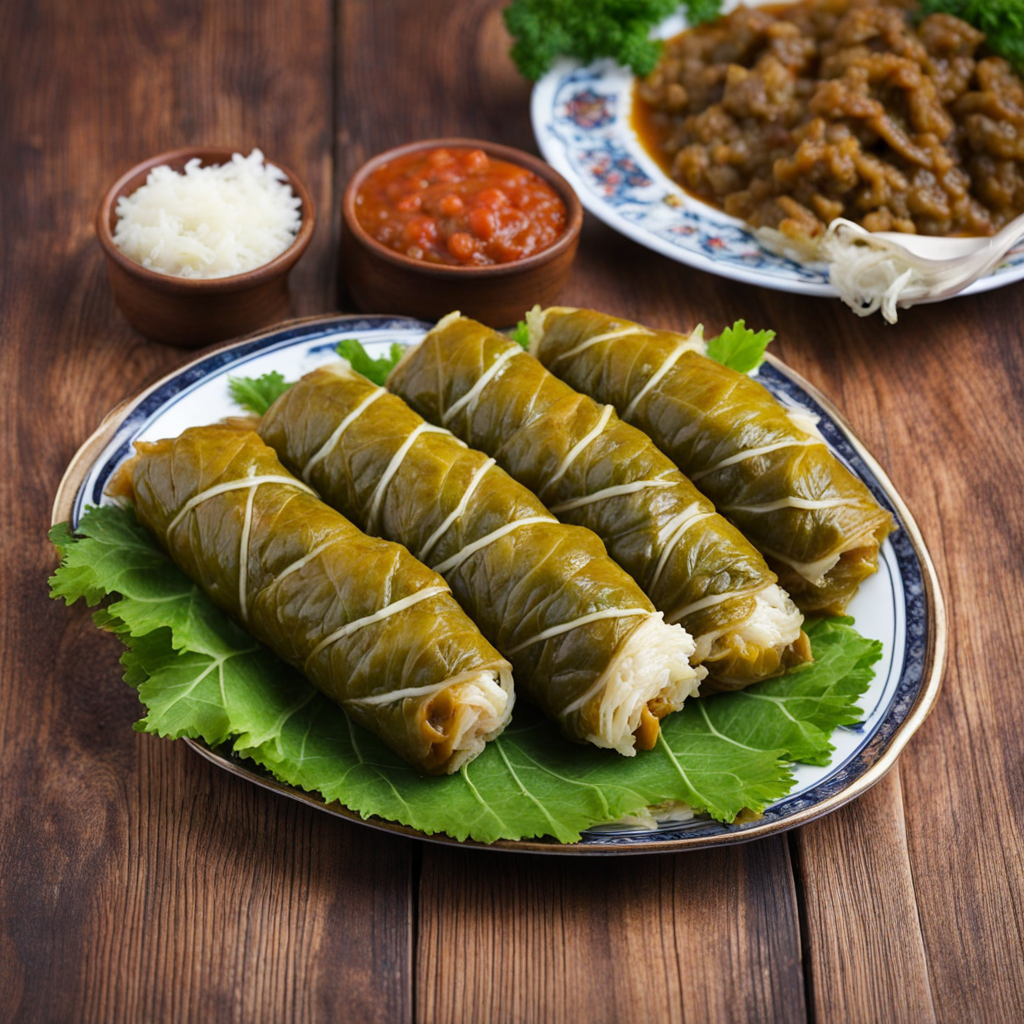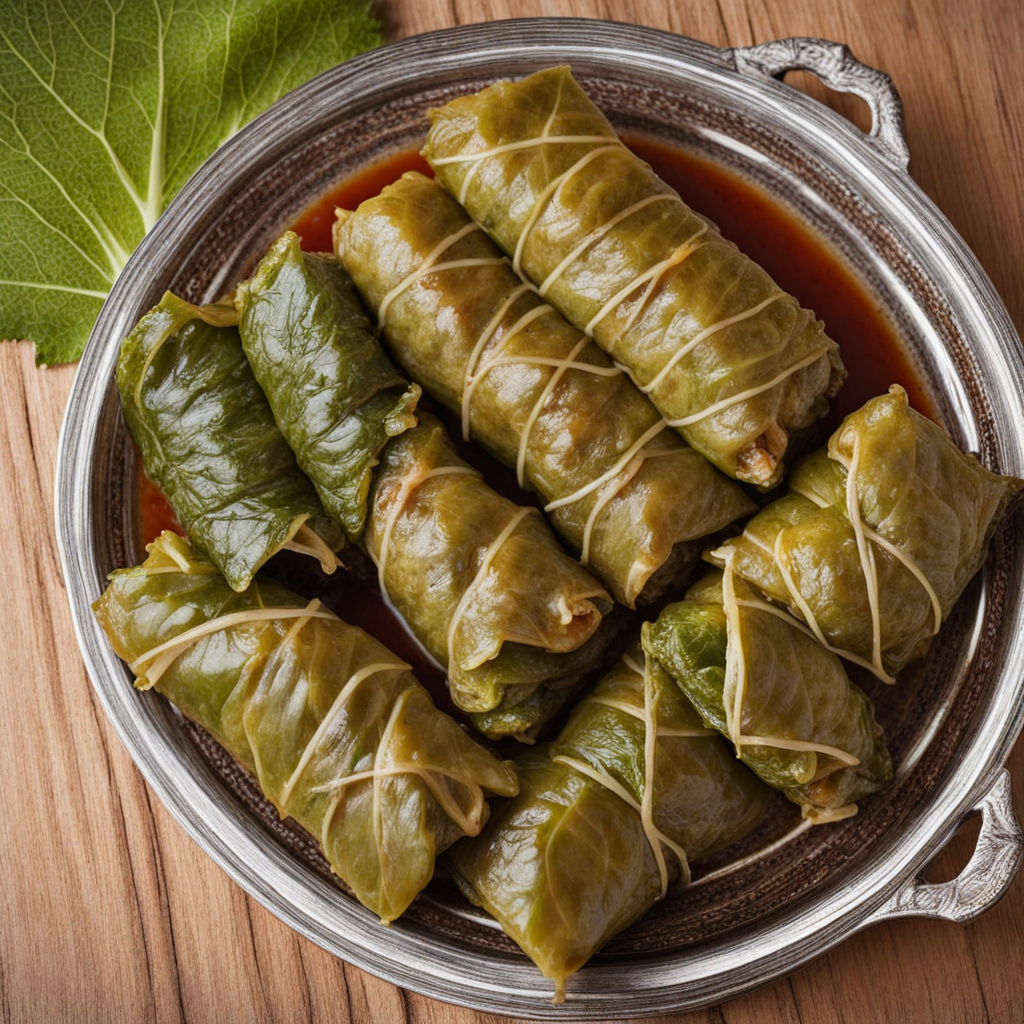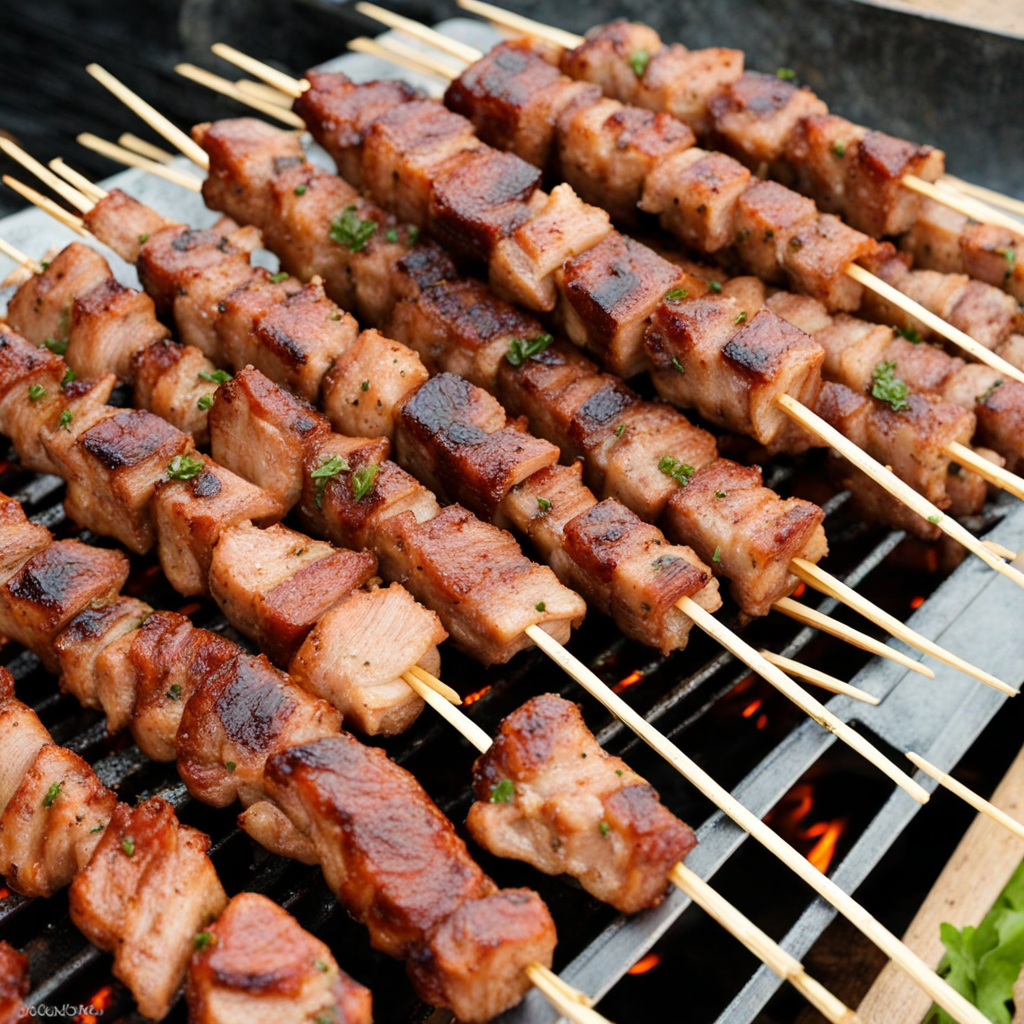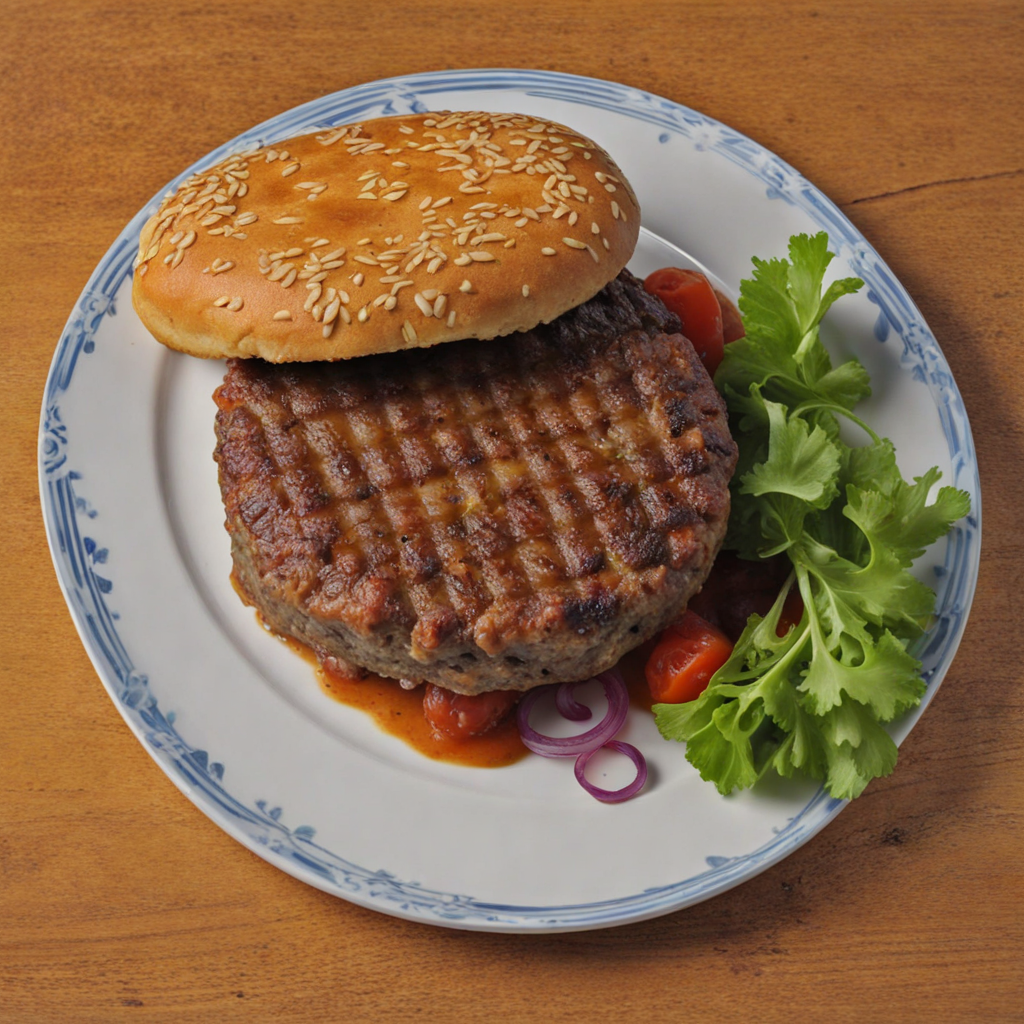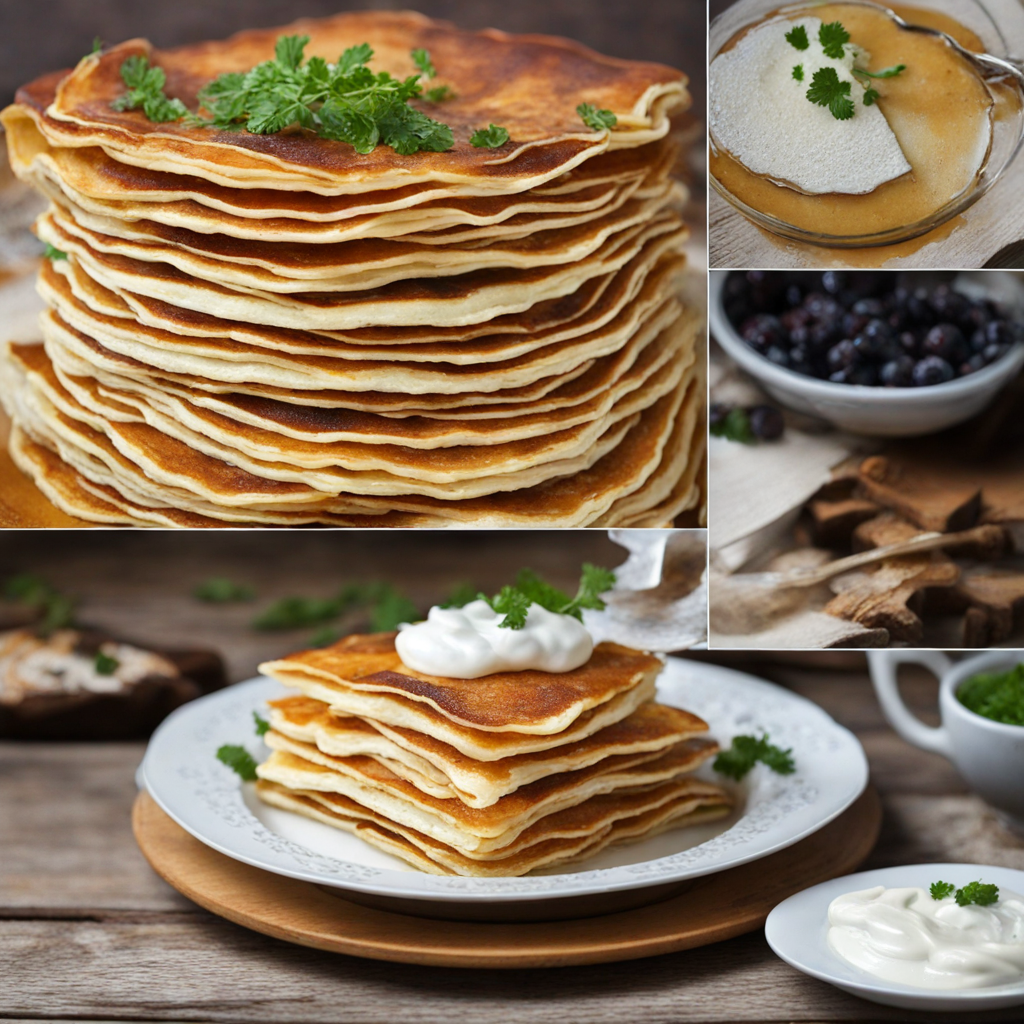Sarma
Sarma is a traditional dish that embodies the rich culinary heritage of Kosovo, showcasing a delightful blend of flavors and textures. At its core, Sarma consists of tender cabbage leaves wrapped around a savory filling, often made from a mixture of minced meat, rice, and a medley of spices. The cabbage, usually pickled, adds a tangy depth to each bite, while the filling boasts a hearty combination of flavors, enhanced by ingredients like onions, garlic, and a touch of paprika. This dish is not only a staple in Kosovar households but also a comforting symbol of home-cooked meals enjoyed during family gatherings and celebrations. The preparation of Sarma is an art in itself, requiring patience and skill. The process starts with carefully blanching or fermenting cabbage leaves to soften them, making them pliable for wrapping. The filling is then lovingly crafted, with each family having its own secret recipe that may include variations such as adding smoked meats or different herbs. Once assembled, the rolls are layered in a pot and slow-cooked with a rich tomato sauce and broth, allowing the flavors to meld beautifully over several hours. The result is a warm, aromatic dish that fills the home with a welcoming scent, inviting everyone to gather around the table. When served, Sarma is often accompanied by a dollop of creamy yogurt or a sprinkle of fresh herbs, which adds a refreshing contrast to the rich, savory rolls. Each bite reveals a delightful interplay of textures—the softness of the cabbage, the hearty filling, and the subtle tang of the sauce. Sarma is a dish that not only satisfies the palate but also tells a story of tradition, family, and the warmth of Kosovar hospitality. Discovering Sarma is like embarking on a culinary journey through Kosovo, where every roll is a taste of culture and history.
How It Became This Dish
The History of Sarma: A Culinary Gem of Kosovo Sarma, a beloved dish in Kosovo and many other parts of the Balkans, consists of vine leaves or cabbage leaves stuffed with a mixture of meat, rice, and spices. Its rich flavors and hearty nature make it a staple in many households, particularly during festive occasions and family gatherings. To understand Sarma’s significance in Kosovo, we must delve into its origins, cultural importance, and its evolution over time. #### Origins of Sarma The word "sarma" derives from the Turkish word "sarmak," which means "to wrap" or "to roll." This culinary technique has roots in ancient practices, with some evidence suggesting that the origins of stuffing vegetables can be traced back to the Ottoman Empire. The Ottomans, who ruled large parts of the Balkans from the 14th to the early 20th century, played a pivotal role in the culinary landscape of the region. They introduced various foods and cooking methods, including the use of grape leaves and cabbage leaves for wrapping fillings. While the specific origins of Sarma are difficult to pinpoint, it is widely believed that the dish evolved from a combination of influences from the Ottoman culinary tradition and the agricultural practices of local communities. Vine leaves, abundant in the Mediterranean climate of Kosovo, became a natural choice for this dish, reflecting the region's agricultural heritage. #### Cultural Significance Sarma holds a cherished place in the hearts and homes of the people of Kosovo. It is more than just a meal; it symbolizes family, community, and tradition. In many households, the preparation of Sarma is a communal activity, often involving multiple generations coming together to share recipes, stories, and laughter. This practice is particularly prominent during holidays and special occasions, such as Christmas, New Year’s, and Eid al-Fitr, where Sarma graces the table as a sign of hospitality and abundance. In Kosovo, Sarma is also a dish that transcends ethnic differences. While it is primarily associated with Albanian cuisine, it is embraced by various ethnic groups, including Serbs, Bosniaks, and Croats, each adding their unique twist to the recipe. This cross-cultural adaptability speaks to the shared culinary heritage of the region, where food acts as a bridge between communities. Moreover, Sarma has become symbolic of resilience. The dish is often prepared in large quantities, reflecting the communal spirit of sharing food during times of hardship or celebration. This is particularly poignant in the context of Kosovo’s turbulent history, where food has often served as a source of comfort and continuity amidst social and political upheaval. #### The Preparation and Ingredients The traditional preparation of Sarma involves a careful balance of ingredients. The heart of the dish consists of minced meat—typically a mix of pork and beef—combined with rice, onions, and a medley of spices such as paprika, salt, and pepper. The filling is then encased in either fermented cabbage leaves or grape leaves, which impart a distinctive tangy flavor to the dish. The choice between cabbage and vine leaves often depends on the season and personal preference. Cabbage Sarma is more common during the winter months when fresh vine leaves are scarce. In contrast, grape leaf Sarma is often enjoyed in the summer, when the leaves are tender and abundant. Regardless of the type of leaf used, the preparation of Sarma requires patience and skill, as each leaf must be carefully filled and rolled to ensure a perfect seal. Once assembled, Sarma is typically simmered in a rich broth, sometimes enhanced with tomato paste or smoked meat for added depth of flavor. The cooking process allows the flavors to meld beautifully, resulting in a dish that is both hearty and comforting. #### Evolution Over Time Over the years, Sarma has evolved to reflect changing tastes and dietary preferences. While traditional recipes remain popular, modern interpretations have emerged, showcasing the versatility of the dish. Vegetarian and vegan versions of Sarma have gained popularity, featuring fillings made from lentils, chickpeas, or a mix of vegetables, catering to those who seek plant-based options. The globalization of food culture has also influenced the way Sarma is prepared and consumed. With the rise of food tourism, many visitors to Kosovo seek out authentic culinary experiences, often participating in cooking classes or family gatherings centered around the preparation of Sarma. This has led to a renewed interest in traditional recipes and techniques, as both locals and tourists strive to preserve the culinary heritage of the region. In addition to its local significance, Sarma has also found a place in the international culinary scene. Chefs and food enthusiasts around the world have begun to celebrate Balkan cuisine, introducing Sarma to a broader audience. This exposure has not only elevated the dish’s status but has also sparked conversations about the cultural narratives embedded in food. #### Conclusion Sarma is more than just a dish; it is a cultural artifact that tells the story of Kosovo’s rich history, diverse communities, and enduring traditions. From its Ottoman roots to its contemporary adaptations, Sarma has remained a beloved staple, fostering connections between people and generations. As it continues to evolve, this dish serves as a reminder of the power of food to unite, nourish, and tell stories that transcend time and place. Whether enjoyed in a cozy family kitchen or served at a festive gathering, Sarma will always hold a special place in the hearts of those who savor its goodness.
You may like
Discover local flavors from Kosovo


